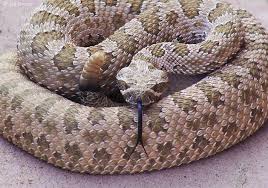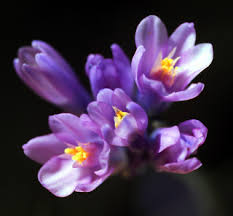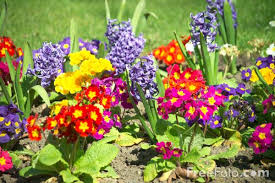Everyone of you hav some soft corner in your hard when it comes to flowers.Nurturing them as your own child and watch it grow before you is the best joy a man can ever get.Today im gonna share some important TIPS for gardening , which i bet u won't find anywhere on d planet.
--------------------------------------------------------------------------------------------
FLOWER GARDENS !!---------------------------------------------------------------------------------------------
1)How to make butterfly gardens !!!:-  B
Butterfly gardening involves planning your garden to attract, retain, and create an inviting habitat that will allow butterflies to flourish. When planning your butterfly gardens, don't forget a nice observation spot for yourself so you can enjoy the results of your work.
To start with you should select nectar-producing plants to cover bloom throughout the season. Whether you add some favorite butterfly plants to an existing garden or start with a new garden designed just for butterflies, Flowers with multiple florets that produce abundant nectar are ideal. Annuals make superb butterfly plants because they bloom continuously through the season, providing a steady supply of nectar. Try perennial plants, such as coneflowers, lilac, butterfly weed, and asters, they are visited regularly by butterflies. Another nectar source for butterflies can be found in most mint families.
Select a sunny location:Butterflies tend to be cold-blooded and thrive in sunshine. Select a warm and sunny spot for you're your garden. Try placing the garden near a wall, or a fence. Keep in mind the strong wind or chilling wind when creating the ideal garden spot, a sheltered garden will be protected from strong winds. Another way to assist the butterflies in warming up during the colder period is to place dark-colored rocks in an area allowing the morning and afternoon sunlight to heat the rocks up. The longer the butterflies stay warming up allows them to feed more and provides more time to find mates and certainly provides length to your viewing pleasure.
Butterflies VS Pesticides:Butterflies are vulnerable to PESTICIDES or INSECTICIDES. Avoid application on or near your garden.
Enjoy your garden. Butterflies pay less attention to people than do birds, so you can sit nearby and watch without disturbing them.
--------------------------------------------------------------------------------------------
2)Understanding Shurb Roses:- All roses fall into the same genus, but can be divided into smaller groups such as the beautiful shrub roses. Understanding a little about the history of the old roses developed before the introduction of the first hybrid tea rose. These plants are grown for their historic interest, color, fragrance and ability to survive adverse conditions.
 Alba Roses: T
Alba Roses: The Albas are one of the oldest races of the rose. Albas form tall shrubs with smooth stems arching up to 6 feet. They have few thorns. The albas have dense, bluish green foliage. They are exquisitely beautiful garden plants, even when not in bloom. Their fragrant blossoms are generally white to blush pink. Albas are resistant to disease and grow into large, healthy shrubs. Albas are unusual shade-tolerant roses. They will grow in the open shade of a north-facing wall or under tall trees.
 Bourbons Roses: T
Bourbons Roses: The Bourbons are named after their place of origin, the lle de Bourbon, an island in the southern Indian Ocean. Bourbons are intensely fragrant. They grow into large shrubs of around 3ft to vigorous climbers of 12 ft. They are susceptible to disease, but are grown for the beauty and fragrance of their prolific flowers and for their vigor. They range in color from deep reds through pinks to blush and white. Bourbons are well-suited to all areas of South Carolina, but will need extra care to control disease.
 China Roses: T
China Roses: The China roses originated as far back as the 10th century, perhaps before. Chinas come in a wide range of colours, and many highly perfumed. They can be used as bedding in mixed or even specimen planting. However, they are not the hardiest of roses and will need some extra protection in colder areas. They do make rewarding greenhouse or conservatory plants.
--------------------------------------------------------------------------------------------
VEGETABLE GARDENS !!--------------------------------------------------------------------------------------------
1)Control Snakes In The Garden!:-  T
To have Non-poisonous snake, such as the common garter snake is not a bad thing other than to see one slither around your yard or make their way into your home on occasion. Garter snakes are not poisonous. Certainly here in California we have rattlesnakes and they are poisonous and need to be removed quickly. Call your local animal control for removal.
The upside to garter snakes in the garden is that they eat pest insects, mosquito larvae, slugs, snails, crickets, and mice.
However, if it is your goal to remove them then there are a few steps that can be taken to eliminate their habitat in your backyard without harming them.
--------------------------------------------------------------------------------------------
2)Growing Garlic at home, information on soil requirments, when to sow, and storage:-  O
One of my favorites is Garlic (Allium sativum) a hardy perennial member of the onion family garlic. If you love garlic you’ll love growing it at home. Not only can you harvest it fresh from your garden, you can try out lots of different varieties that aren't available to you in the grocery store. There are hundreds of varieties, each varying in color, spiciness and usefulness in methods of cooking.
Soil Requirements:- The best time to grow garlic is in the fall and garlic grows best on friable (crumbly) loamy soils that are fertile and high in organic matter. The soil must be kept evenly moist as dry soil will cause irregularly shaped bulbs. Heavy clay soils will also create misshaped bulbs and make harvesting difficult. Add organic matter, such as well-rotted manure or compost to the soil on a yearly basis to keep it friable.
Bulbs:- For best results buy a head of garlic bought from a reputable grower, or from a garden centre or gardening catalogue. Garlic bought in a supermarket can be inferior.
--------------------------------------------------------------------------------------------
HERB GARDENS !!--------------------------------------------------------------------------------------------
1)Indoor Herb Gardening:- S
So you want to add a fresh fragrance indoors with herbs. Start taking delight in the magic of gardening by starting an indoor herb garden.
Create a sun space:- Basically, herbs require a good 4-5 hours of light, water, air humidity, and freedom from droughts and extreme temperature. Kitchens do well! Place your herb containers by the sunniest window you have. Most herbs fare better and look more attractive in groups. If sufficient light is a problem consider a grow light. A standard shop fluorescent light will work as well!
Temperature:- Most herbs prefer a warm temperature about 60-70 degrees. Herbs will tolerate the temperature range of 45-75 degrees, but they will not thrive for long.
Herbs used in cooking:- In order to fire up your culinary magic try growing the herbs you can use in cooking. Some common herbs: Basil - Oregano - Mint - Parsley
- Rosemary - To name a few.
--------------------------------------------------------------------------------------------
2)Potted Herbs:-  Learn how to grow selected herbs in outdoor pots. T
Learn how to grow selected herbs in outdoor pots. There are several reasons to consider growing selected herbs in outdoor pots even when you have a garden ground available. Pots or enclosed raised beds are especially suitable. To contain herbs that spread, such as mint and sorrel. Container planting also dramatizes singularly attractive specimen plants, like Spanish lavender with its twisting foliage and spiked purple flower, or lemon verbena, noteworthy for its graceful arching branches as well as its seductive sent.
Herbs with similar growing requirements can be planted together in the same pot or planted in several pots and kept in the same location to create planting themes also obviously; herbs that can’t survive the winter in the ground can be planed in pots that can be moved in and out of the weather.
--------------------------------------------------------------------------------------------










 Butterfly gardening involves planning your garden to attract, retain, and create an inviting habitat that will allow butterflies to flourish. When planning your butterfly gardens, don't forget a nice observation spot for yourself so you can enjoy the results of your work.
Butterfly gardening involves planning your garden to attract, retain, and create an inviting habitat that will allow butterflies to flourish. When planning your butterfly gardens, don't forget a nice observation spot for yourself so you can enjoy the results of your work. Alba Roses: The Albas are one of the oldest races of the rose. Albas form tall shrubs with smooth stems arching up to 6 feet. They have few thorns. The albas have dense, bluish green foliage. They are exquisitely beautiful garden plants, even when not in bloom. Their fragrant blossoms are generally white to blush pink. Albas are resistant to disease and grow into large, healthy shrubs. Albas are unusual shade-tolerant roses. They will grow in the open shade of a north-facing wall or under tall trees.
Alba Roses: The Albas are one of the oldest races of the rose. Albas form tall shrubs with smooth stems arching up to 6 feet. They have few thorns. The albas have dense, bluish green foliage. They are exquisitely beautiful garden plants, even when not in bloom. Their fragrant blossoms are generally white to blush pink. Albas are resistant to disease and grow into large, healthy shrubs. Albas are unusual shade-tolerant roses. They will grow in the open shade of a north-facing wall or under tall trees. Bourbons Roses: The Bourbons are named after their place of origin, the lle de Bourbon, an island in the southern Indian Ocean. Bourbons are intensely fragrant. They grow into large shrubs of around 3ft to vigorous climbers of 12 ft. They are susceptible to disease, but are grown for the beauty and fragrance of their prolific flowers and for their vigor. They range in color from deep reds through pinks to blush and white. Bourbons are well-suited to all areas of South Carolina, but will need extra care to control disease.
Bourbons Roses: The Bourbons are named after their place of origin, the lle de Bourbon, an island in the southern Indian Ocean. Bourbons are intensely fragrant. They grow into large shrubs of around 3ft to vigorous climbers of 12 ft. They are susceptible to disease, but are grown for the beauty and fragrance of their prolific flowers and for their vigor. They range in color from deep reds through pinks to blush and white. Bourbons are well-suited to all areas of South Carolina, but will need extra care to control disease.  China Roses: The China roses originated as far back as the 10th century, perhaps before. Chinas come in a wide range of colours, and many highly perfumed. They can be used as bedding in mixed or even specimen planting. However, they are not the hardiest of roses and will need some extra protection in colder areas. They do make rewarding greenhouse or conservatory plants.
China Roses: The China roses originated as far back as the 10th century, perhaps before. Chinas come in a wide range of colours, and many highly perfumed. They can be used as bedding in mixed or even specimen planting. However, they are not the hardiest of roses and will need some extra protection in colder areas. They do make rewarding greenhouse or conservatory plants. To have Non-poisonous snake, such as the common garter snake is not a bad thing other than to see one slither around your yard or make their way into your home on occasion. Garter snakes are not poisonous. Certainly here in California we have rattlesnakes and they are poisonous and need to be removed quickly. Call your local animal control for removal.
To have Non-poisonous snake, such as the common garter snake is not a bad thing other than to see one slither around your yard or make their way into your home on occasion. Garter snakes are not poisonous. Certainly here in California we have rattlesnakes and they are poisonous and need to be removed quickly. Call your local animal control for removal. One of my favorites is Garlic (Allium sativum) a hardy perennial member of the onion family garlic. If you love garlic you’ll love growing it at home. Not only can you harvest it fresh from your garden, you can try out lots of different varieties that aren't available to you in the grocery store. There are hundreds of varieties, each varying in color, spiciness and usefulness in methods of cooking.
One of my favorites is Garlic (Allium sativum) a hardy perennial member of the onion family garlic. If you love garlic you’ll love growing it at home. Not only can you harvest it fresh from your garden, you can try out lots of different varieties that aren't available to you in the grocery store. There are hundreds of varieties, each varying in color, spiciness and usefulness in methods of cooking.  So you want to add a fresh fragrance indoors with herbs. Start taking delight in the magic of gardening by starting an indoor herb garden.
So you want to add a fresh fragrance indoors with herbs. Start taking delight in the magic of gardening by starting an indoor herb garden.  Learn how to grow selected herbs in outdoor pots.
Learn how to grow selected herbs in outdoor pots. Ocimum sanctum (holy basil), called Tulsi in India, is ubiquitous in Hindu tradition. Perhaps its role as a healing herb was instrumental in its "sacred" implication.
Ocimum sanctum (holy basil), called Tulsi in India, is ubiquitous in Hindu tradition. Perhaps its role as a healing herb was instrumental in its "sacred" implication. Banksia integrifolia is common along the east coast of the Australian mainland, but has recently been declared extinct in Tasmania.
Banksia integrifolia is common along the east coast of the Australian mainland, but has recently been declared extinct in Tasmania.